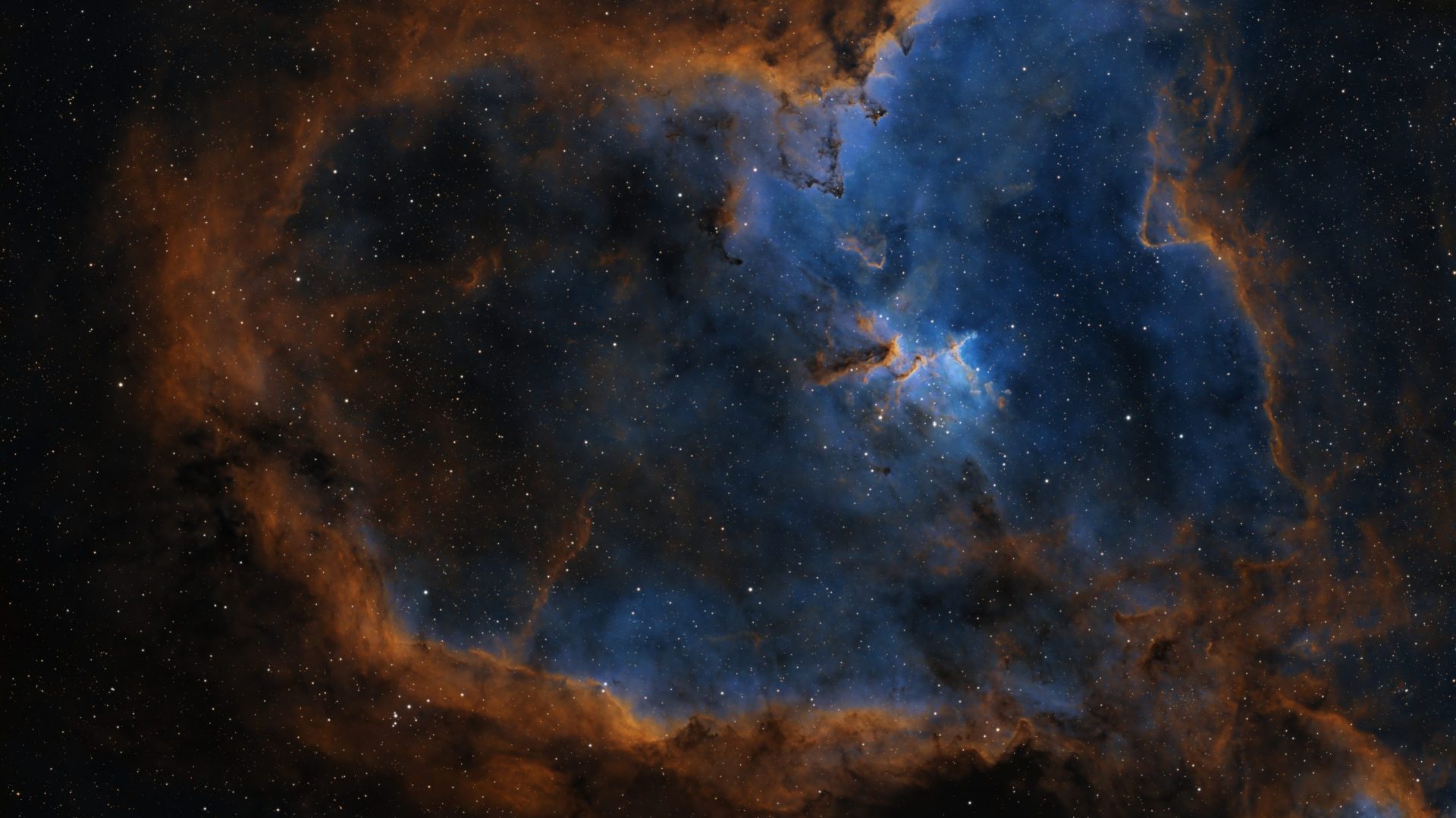Finally, all the pieces have arrived!
The Skywatcher Evostar 80ED Pro looks nice and feels like a high quality build. Since I will be using this telescope for astro photography and not visual observing I started with removing everything but the last lock ring from the focus tube. At first I didn’t think that it was removable, but it was just very tight and I had to apply some foce. I also rotated the lock ring clockwise until it came to a stop.
 I got the Skywatcher 0,85x focal reducer and that is basicly used to reduce field curvature, providing the flat field necessary for astrophotography. It is also used to compress the light cone exiting the telescope down to a size closer to that of the sensor within your camera, which results in a brighter image which reduces the exposure time.
I got the Skywatcher 0,85x focal reducer and that is basicly used to reduce field curvature, providing the flat field necessary for astrophotography. It is also used to compress the light cone exiting the telescope down to a size closer to that of the sensor within your camera, which results in a brighter image which reduces the exposure time.
I attached the focal reducer by screwing it onto the focus tube. After the focal reducer I screwed on a Skywatcher M48x0,75 Canon EOS adapter that will let me attach my Canon 60D DSLR.
 Time for the imaging scope and the guide scope. I wanted to mount the guide scope ontop of the main imaging scope and not in the finder scope mount just to add some extra stability and to avoid the whole assembly beeing back heavy. I quickly realized that the bolts needed for this was 1/4 inch 20 thread and I only had metric bolts available at first glance. This was sorted out when I found some hinding in the garage.
Time for the imaging scope and the guide scope. I wanted to mount the guide scope ontop of the main imaging scope and not in the finder scope mount just to add some extra stability and to avoid the whole assembly beeing back heavy. I quickly realized that the bolts needed for this was 1/4 inch 20 thread and I only had metric bolts available at first glance. This was sorted out when I found some hinding in the garage.
The tube rings for the guide scope was mounted on an extra dovetail that came with the HEQ5 Pro mount.
 The dovetail for the guide scope was then mounted on the main imaging scope tube rings, also with 1/4 inch 20 thread bolts. Please pay attention to the bolt length, I used 15 millimeter bolts and I think that the maximum length before you hit the telescope is about 19 millimeters with this setup.
The dovetail for the guide scope was then mounted on the main imaging scope tube rings, also with 1/4 inch 20 thread bolts. Please pay attention to the bolt length, I used 15 millimeter bolts and I think that the maximum length before you hit the telescope is about 19 millimeters with this setup.
 Finally, time to put it all together. I mounted the Evostar 80ED Pro in the main tube rings with the guide scope mount attached to them. Then I mounted the Evoguide 50ED and adjusted that to be as aligned with the imaging scope as possible. I attached the ASI 120MM Mini camera to the guide scope and the Canon 60D DSLR to the imaging scope. I removed the battery grip and extra battery from the Canon before I mounted it on the imaging scope in order to reduce weight.
Finally, time to put it all together. I mounted the Evostar 80ED Pro in the main tube rings with the guide scope mount attached to them. Then I mounted the Evoguide 50ED and adjusted that to be as aligned with the imaging scope as possible. I attached the ASI 120MM Mini camera to the guide scope and the Canon 60D DSLR to the imaging scope. I removed the battery grip and extra battery from the Canon before I mounted it on the imaging scope in order to reduce weight.

As I last step, I thought about how to manage all the cables and I came up with the idea of using the redundant mount for the guide scope. I attached the mount where the finder scope usually is positioned and then attached my USB hub to it with a couple of bolts. I finished it all off with some zip ties.

Coming up is testing the optical assembly on the mount and also configuration of the PC controlling everything.
Until then, clear skies!

